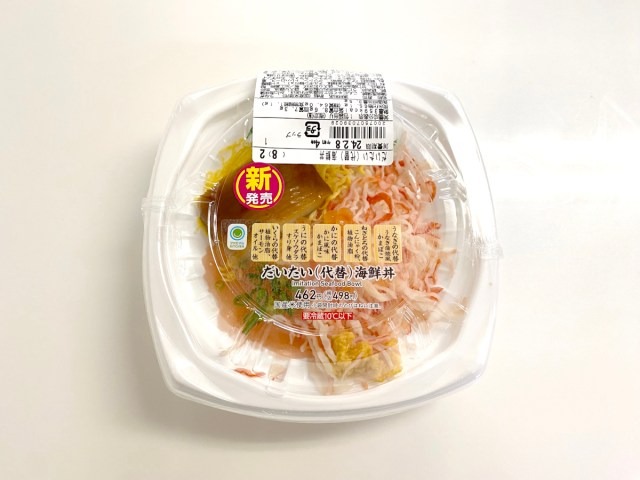
A taste of things to come?
Food insecurity is a constantly growing problem around the world, leading to a rethink about the ways we obtain and consume our food. But as luck would have it, we also live in an age of great technological advancements where soda can be made to taste like French fries and candy to taste like salmon, so even if some of our favorite foods become unavailable, there is hope that alternatives can be made.
Convenience store chain Family Mart has taken a proactive approach to this and began selling their Daitai Seafood Rice Bowl. The “daitai” in the name has a double meaning of both “vaguely” and “alternative” signifying that the seafood in this dish isn’t quite the real thing and is made with alternative ingredients.
With overfishing, climate change, and even political instability threatening the supply chain of a wide range of seafood, Family Mart has looked into some more sustainable sources to recreate the same dining experience for 498 yen (US$3.37) a bowl.
To find out if they succeeded, our Japanese-language reporter P.K. Sanjun picked up a bowl and sampled each of the faux toppings. But first, let’s make a rundown of all the imitation seafood this bowl has to offer, starting with the “crab” which is made from crab-flavored kamaboko steamed fish paste sausage.
Kamaboko has also been forged into the likeness of a “grilled eel” chunk.
This small side of “sea urchin” is actually a surimi paste made from whitefish such as Alaska pollock.
The “ikura” salmon roe was crafted mainly from a combination of vegetable oil and salmon oil.
And finally, the ground fatty tuna known as “negitoro” was replicated using konnyaku powder and vegetable oil.
P.K. honestly felt that these alternative toppings were not as appetizing looking as actual seafood, but realizing that this may be the future of food, he tried to keep an open mind while sampling each of the toppings one by one.
The “crab” didn’t taste like crab at all, but this kind of imitation crab has been popular for a long time so it wasn’t strange either.
Using the same method to recreate grilled eel was much more daring. Although they made the kamaboko surprisingly soft, it still didn’t match the texture of real eel. That being said, the taste of grilled eel is largely dominated by its distinctive sauce, so this version was pretty palatable too.
P.K. thought Family Mart did a pretty remarkable job of simulating the taste and mouthfeel of sea urchin though. He felt that with small enough portions, you could fool someone into thinking this was the real thing.
Speaking of which, it was a little difficult to judge the “ikura” because there were only a few “eggs” to eat. From what P.K. could tell, however, they were very accurate too. The taste was likely helped by the use of salmon oil.
The “negitoro” looked the part and seemed to have the right texture when P.K. poked it with his chopsticks. But the moment he put some in his mouth, he could feel his entire body cringe in revulsion. Taste is often a matter of opinion and in our writer’s, this was just bad.
So, overall, these seafood alternatives ran the gamut of quality but P.K. found the entire bowl edible thanks in part to the vinegared rice and soy sauce. Had he eaten it more casually and not laser-focused on each topping, it might have been more pleasurable too. That being said, he would be hard-pressed to recommend this to anyone based on its taste alone.
Still, anyone interested in it as an example of sustainable food production might want to take a bowl for the spin. If this is destined to be the future of food, at least Family Mart is getting an early start on developing it into something better. Hopefully, the taste will have improved considerably by the time we’re all expected to eat grasshoppers and giant water bugs.
Photos ©SoraNews24
● Want to hear about SoraNews24’s latest articles as soon as they’re published? Follow us on Facebook and Twitter!
[ Read in Japanese ]

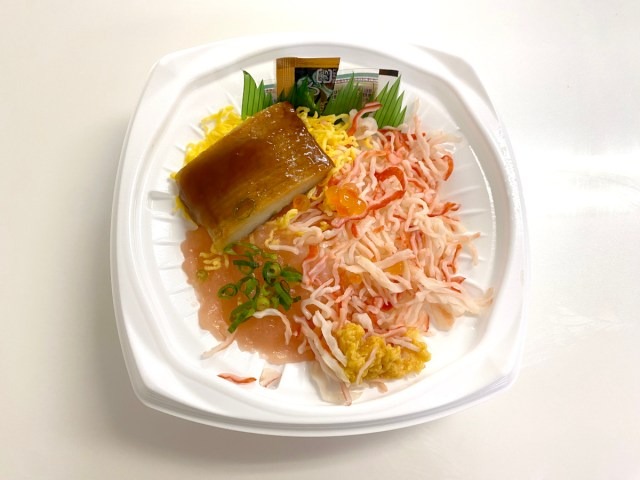
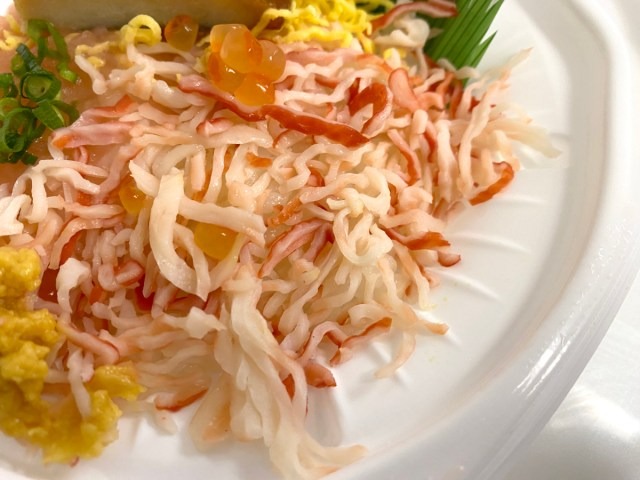
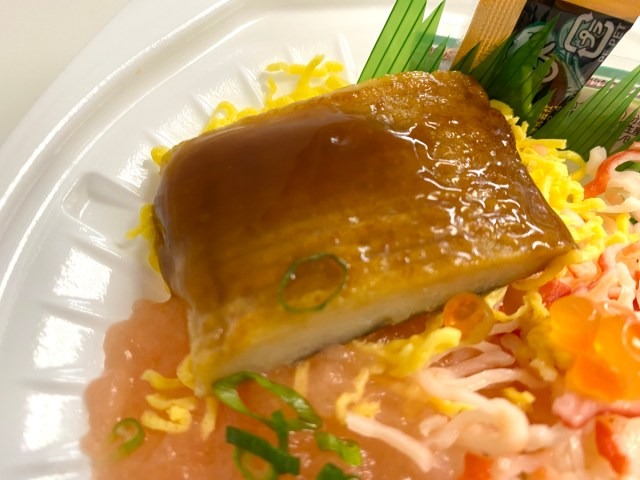
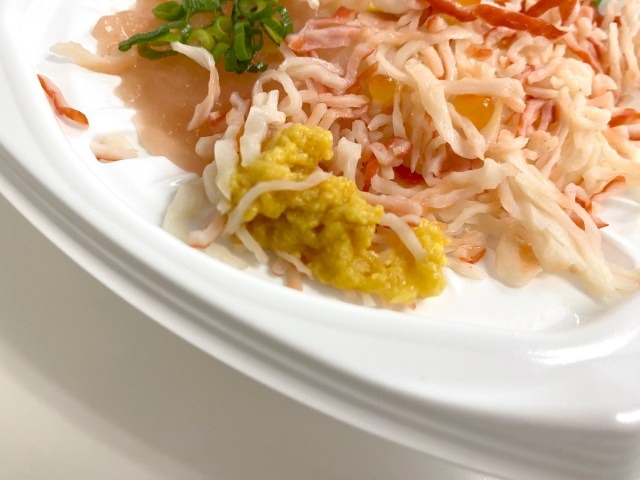
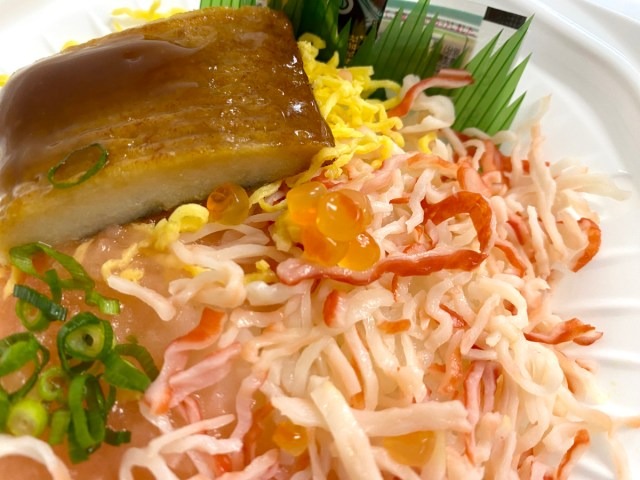

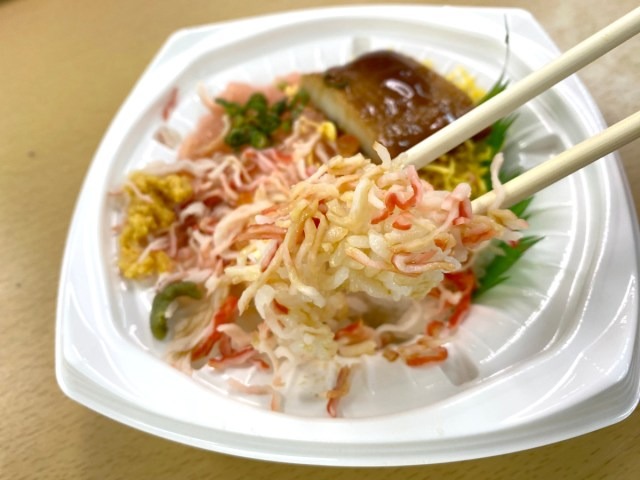
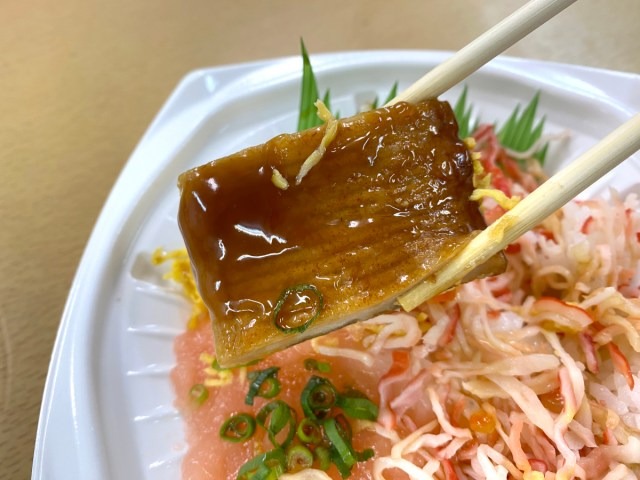


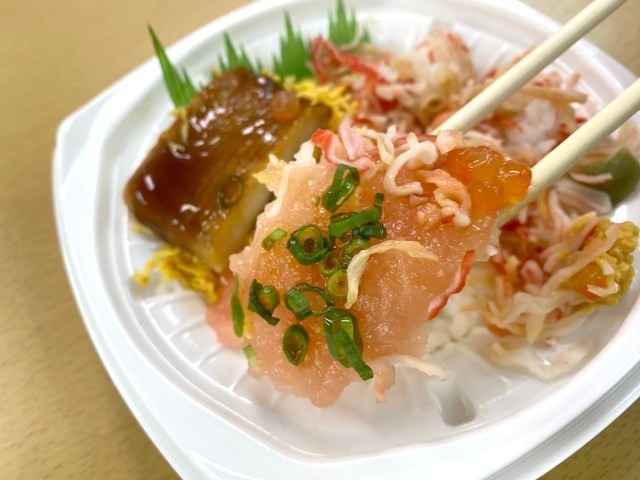
 Eating every kind of cold noodle dish from Family Mart to stave off the summer heat【Taste test】
Eating every kind of cold noodle dish from Family Mart to stave off the summer heat【Taste test】 Japan super budget dining – What’s the best way to spend 1,000 yen at Family Mart?
Japan super budget dining – What’s the best way to spend 1,000 yen at Family Mart? Ramen restaurant’s English menu prices are nearly double its Japanese ones, denies discriminating
Ramen restaurant’s English menu prices are nearly double its Japanese ones, denies discriminating Here’s what our bachelor writers ate over the New Year’s holiday in Japan
Here’s what our bachelor writers ate over the New Year’s holiday in Japan Things get heavy with the Gold Lucky Bag from Village Vanguard
Things get heavy with the Gold Lucky Bag from Village Vanguard Top Japanese cosplayer Enako returns to Comiket after 6 years, creates mayhem with admirers
Top Japanese cosplayer Enako returns to Comiket after 6 years, creates mayhem with admirers Japanese beef bowl chain Sukiya’s 2026 Smile Box lucky bag basically pays for itself
Japanese beef bowl chain Sukiya’s 2026 Smile Box lucky bag basically pays for itself Tokyo fish market breaks New Year auction record as single fish sells for over 500 million yen【Vid】
Tokyo fish market breaks New Year auction record as single fish sells for over 500 million yen【Vid】 What makes a good boss in Japan? Workers sound off in survey
What makes a good boss in Japan? Workers sound off in survey Japanese avoiding domestic travel as foreign tourists increase, possibly creating vicious cycle
Japanese avoiding domestic travel as foreign tourists increase, possibly creating vicious cycle Never work with animals: Outtakes from Japanese delivery company’s adorable black cat ad【Video】
Never work with animals: Outtakes from Japanese delivery company’s adorable black cat ad【Video】 Attack on Titan sukajan jackets bring elegant action to your wardrobe, are two garments in one
Attack on Titan sukajan jackets bring elegant action to your wardrobe, are two garments in one Starbucks Japan ready to get Year of the Horse started with adorable drinkware and plushies【Pics】
Starbucks Japan ready to get Year of the Horse started with adorable drinkware and plushies【Pics】 Hayao Miyazaki says Happy New Year to Studio Ghibli fans with new art for Year of the Horse
Hayao Miyazaki says Happy New Year to Studio Ghibli fans with new art for Year of the Horse Cup Noodle tries an authentic Jiro-style ramen, but something’s not quite right
Cup Noodle tries an authentic Jiro-style ramen, but something’s not quite right The best Starbucks Japan Frappuccinos we want to drink again in 2026
The best Starbucks Japan Frappuccinos we want to drink again in 2026 We revisited Sweets Paradise after a decade to see if Japan’s dessert buffet still delivers
We revisited Sweets Paradise after a decade to see if Japan’s dessert buffet still delivers That time Seiji called JASRAC to ask why he didn’t get paid royalties for his song being on TV
That time Seiji called JASRAC to ask why he didn’t get paid royalties for his song being on TV We found possibly the quietest Japanese-style hotel in Tokyo’s bustling Shinjuku district
We found possibly the quietest Japanese-style hotel in Tokyo’s bustling Shinjuku district Pizza Hut Japan’s hot lucky bags are perfect for a New Year’s pizza party
Pizza Hut Japan’s hot lucky bags are perfect for a New Year’s pizza party Japan’s oldest largetooth sawfish in captivity back on display in Mie Prefecture
Japan’s oldest largetooth sawfish in captivity back on display in Mie Prefecture 7-Eleven Japan starts new temporary luggage storage service in over 300 branches
7-Eleven Japan starts new temporary luggage storage service in over 300 branches Disillusionment at Tsukiji’s tourist-target prices led us to a great ramen restaurant in Tokyo
Disillusionment at Tsukiji’s tourist-target prices led us to a great ramen restaurant in Tokyo Starbucks teams up with 166-year-old Kyoto doll maker for Year of the Horse decorations【Photos】
Starbucks teams up with 166-year-old Kyoto doll maker for Year of the Horse decorations【Photos】 Tokyo considering law requiring more trash cans following litter increase in heavily touristed area
Tokyo considering law requiring more trash cans following litter increase in heavily touristed area Tokyo’s Tsukiji sushi neighborhood asks tour groups to stay away for the rest of the month
Tokyo’s Tsukiji sushi neighborhood asks tour groups to stay away for the rest of the month Tokyo event lets you travel back in time, for free, to celebrate 100 years since Showa era start
Tokyo event lets you travel back in time, for free, to celebrate 100 years since Showa era start Japan may add Japanese language proficiency, lifestyle classes to permanent foreign resident requirements
Japan may add Japanese language proficiency, lifestyle classes to permanent foreign resident requirements Sanrio theme park in Japan announces plans to expand into a Sanrio resort
Sanrio theme park in Japan announces plans to expand into a Sanrio resort Stamina-destroying “Paralysis Noodles” are Tokyo’s newest over-the-top ramen innovation
Stamina-destroying “Paralysis Noodles” are Tokyo’s newest over-the-top ramen innovation Survey asks foreign tourists what bothered them in Japan, more than half gave same answer
Survey asks foreign tourists what bothered them in Japan, more than half gave same answer Japan’s human washing machines will go on sale to general public, demos to be held in Tokyo
Japan’s human washing machines will go on sale to general public, demos to be held in Tokyo Japan’s deadliest food claims more victims, but why do people keep eating it for New Year’s?
Japan’s deadliest food claims more victims, but why do people keep eating it for New Year’s? We deeply regret going into this tunnel on our walk in the mountains of Japan
We deeply regret going into this tunnel on our walk in the mountains of Japan Studio Ghibli releases Kodama forest spirits from Princess Mononoke to light up your home
Studio Ghibli releases Kodama forest spirits from Princess Mononoke to light up your home Major Japanese hotel chain says reservations via overseas booking sites may not be valid
Major Japanese hotel chain says reservations via overseas booking sites may not be valid Put sesame oil in your coffee? Japanese maker says it’s the best way to start your day【Taste test】
Put sesame oil in your coffee? Japanese maker says it’s the best way to start your day【Taste test】 No more using real katana for tourism activities, Japan’s National Police Agency says
No more using real katana for tourism activities, Japan’s National Police Agency says Starbucks Japan reveals new sakura drinkware collection, inspired by evening cherry blossoms
Starbucks Japan reveals new sakura drinkware collection, inspired by evening cherry blossoms Updated cherry blossom forecast shows extra-long sakura season for Japan this year
Updated cherry blossom forecast shows extra-long sakura season for Japan this year
Leave a Reply